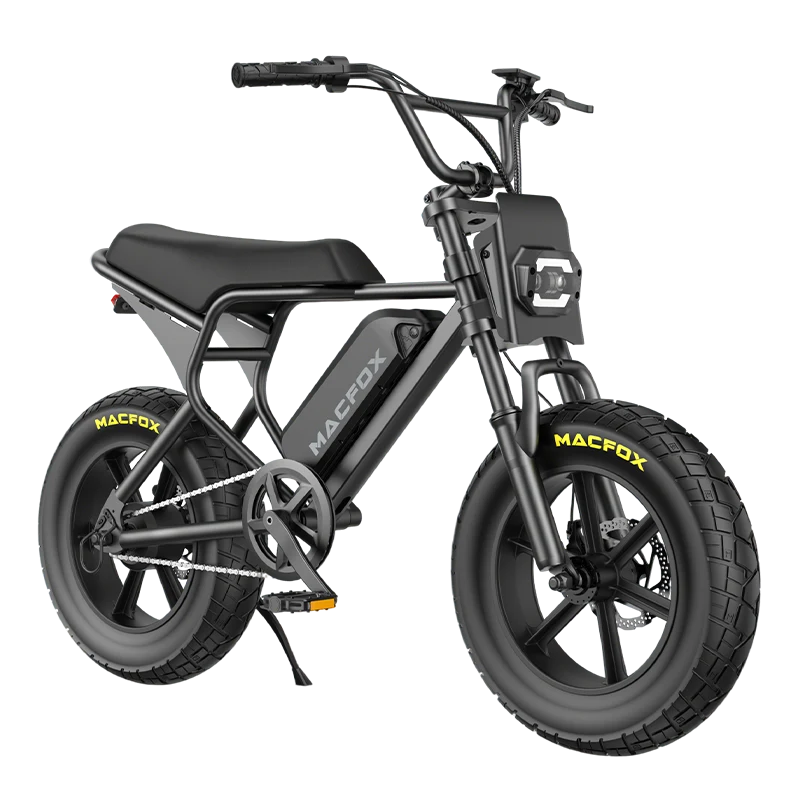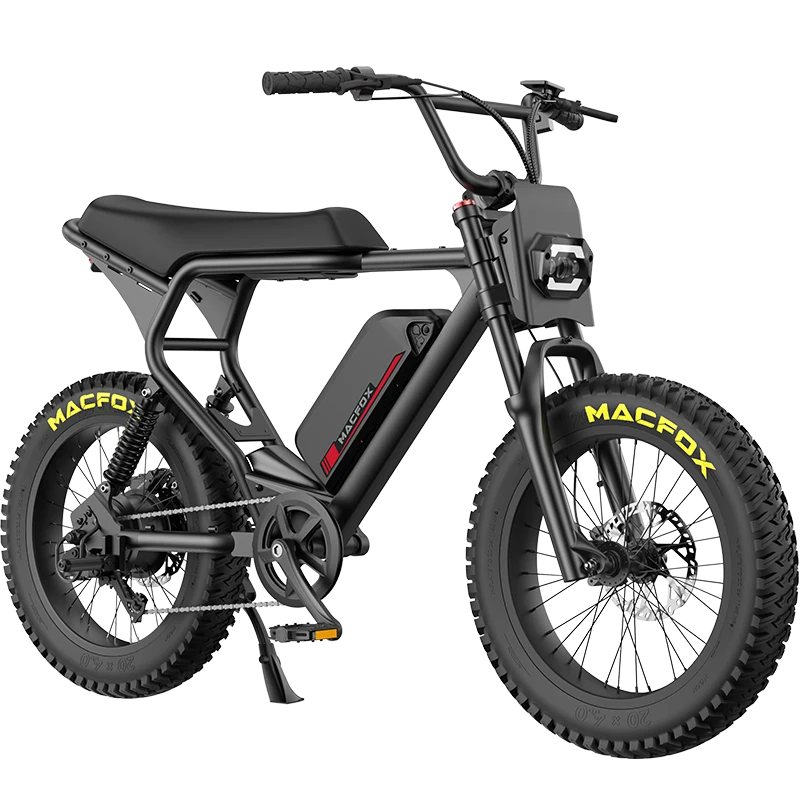Pedelecs and e-bikes both employ electric motors to give riders an additional boost, leading some riders to mistake them for one another. Although both vehicles share similarities, essential distinctions that shouldn't be overlooked affect ride quality and utility.
Are You Wondering Which Electric Bike you should purchase? Read On As We Detail the Differences
What is a Pedelec?

A pedelec is a bicycle designed to deliver power automatically. At the same time, you pedal via an integrated motor that activates when pedalling begins and provides extra assistance for pedalling at higher speeds - giving an illusion that you are riding with wind support behind you.
Definition and Overview
Once you stop pedalling, the electric assistance stops, too, making pedelecs ideal for hills or riding against headwinds.
An electric bike also increases range over traditional bikes as you'll always have some kind of assistance available to you.
Pedelecs first debuted in 1999 as a cost-cutting alternative to e-bikes with pedal-independent throttles, offering pedalling power at up to 25 kph speed. Their electric motor is limited to 250 watts.
Due to their pedal-linked throttles, these electric bikes avoid many stringent regulations associated with more powerful e-bikes; instead, they are classified as conventional bicycles and treated accordingly in law.
Key Features
- Pedal-Activated Motor: Enhancing your riding experience without taking over.
- Limited Power: 250W motor capped at 25kph top speed.
- Legal Classification: Considered conventional bicycles in most jurisdictions to avoid stricter regulations.
What is an Electric Bike?

Electric bikes provide an innovative method of electric-assisted cycling, providing power on demand without pedalling required. These bikes allow riders to access power without pedalling.
Definition and Overview
E-bikes provide power whenever you require it, providing a boost when needed or when you are turned off altogether.
E-bikes typically boast more powerful motors, with variable levels of assistance depending on terrain. They also feature cutting-edge techs such as route tracking, app synchronization, and range monitoring.
Key Features
Throttle Control: Allows for independent control of motor power without pedalling. Higher Power: Typically more powerful than pedelecs and providing more assistance. Advanced Technology: Features such as route tracking, app synchronization and range monitoring can all be found here.
Read more: Electric Bike Twist Throttle or Thumb Throttle – Which One Is Right for You?
Key Differences Between Electric and Electric-Assist Bicycles
Understanding the differences between e-bikes and electric-assist bicycles (EAB) is of vital importance when considering purchasing one as both offer motorized assistance; however, their respective methods for providing power delivery differ considerably, and their legal classifications have an effectful riding experience.
Power Delivery
One of the key differences between electric bikes and pedelecs lies in how their power delivery occurs. Electric-assist bicycles (pedelecs) only deliver power when pedalling takes place - their motor then kicks in to help ease pedalling effort for easier uphill or crosswind riding.
This pedal-assist system creates a natural riding experience, often preferred by traditional cyclists who wish to maintain an equal physical exertion level while taking advantage of extra boost when needed.
However, electric bicycles offer power on demand without pedalling. Equipped with a throttle that enables riders to control their motor directly, it allows them to accelerate or maintain speed without pedalling.
E-bikes provide more versatility for riders needing to cover long distances or varied terrain without exerting constant pedalling effort.
E-bikes often come equipped with adjustable levels of assistance, enabling riders to tailor their experience based on personal preferences and journey demands.
Legal Classification
Electric bikes and pedelecs differ legally as well. Most jurisdictions classify pedelecs as conventional bicycles because they provide motor assistance only during pedalling with an integrated power cap of typically 250 watts, allowing them to be used freely without additional regulations or licensing fees.
This classification allows pedestrians to be safely utilized on bike paths, trails, and urban roads without special licenses or insurance policies.
Conversely, e-bikes with throttle control and higher power outputs may be subject to stricter regulations depending on their region of operation. They could fall under a similar classification as mopeds or motorcycles, requiring registration, licensing and compliance with specific road rules.
These regulations may limit where electric bikes are ridden and impose additional costs and responsibilities upon their riders.
Ride Quality and Utility
E-bikes and pedelecs provide similar ride qualities, with pedelecs offering more consistent assistance, identical to traditional bicycles but with additional convenience.
Fitness-minded cyclists or those seeking an interactive riding experience will find them an ideal solution.
Pedelecs can be particularly beneficial in hilly environments or casual rides where riders prefer a steady, supportive boost.
With their variable power delivery and increased motor capacity, E-bikes are ideal for long-distance travel, varied terrains and situations that require a quick burst of speed.
Motorized bicycles offer convenient and flexible transportation solutions, perfect for city commuters, delivery riders or anyone seeking a practical transportation option.
Advanced technologies like route tracking and app synchronization increase the usefulness of electric bikes, making them part of an active tech lifestyle.
Benefits of Electric Bicycles

Electric bicycles provide many benefits beyond mere convenience, from environmental savings and health improvements to cost savings, and e-bikes offer compelling arguments to be considered as transportation alternatives.
Environmental Impact
One of the primary advantages of electric bicycles is their positive environmental impact. You can significantly lower your carbon footprint by trading car trips for bike rides.
E-bikes produce zero emissions, helping reduce air pollution and mitigate climate change.
E-bikes also help reduce traffic congestion and emissions from idling vehicles, offering urban areas facing air quality issues or traffic jams a transformative solution.
Health and Fitness
Electric bikes provide some level of motor assistance; however, they still encourage physical activity, particularly for pedestrians who require riders to pedal to access motor support, providing regular exercise while receiving motor assistance.
Enhanced cardiovascular health, increased muscle strength, and better overall fitness may all be beneficial.
E-bikes that provide throttle control encourage outdoor activity and can serve as an entryway into more active lifestyles for individuals who may otherwise not exercise regularly.
Reducing chronic diseases related to inactivity through regular use of an electric bike may help.
Cost Efficiency
E-bikes provide significant cost-cutting advantages over traditional motor vehicles. They're cheaper to purchase, less maintenance intensive, and boast no fuel expenses compared to cars; charging an e-bike costs considerably less than fueling it up, with maintenance typically consisting of basic bicycle upkeep rather than costly automotive repairs.
Over time, savings on fuel, maintenance costs and other car-related expenses can add up, making e-bikes an economically viable solution. Furthermore, many cities offer incentives for purchasing them, further lowering initial investments.
Access and Convenience
Electric bikes provide greater accessibility and convenience for users across various fitness levels and ages, making cycling feasible even for those who find traditional cycling challenging.
E-bikes make commutes less strenuous and encourage more people to see biking as an efficient form of transport.
E-bikes provide an eco-friendly solution to traffic jams and reduce commute times, making them a time-efficient alternative to cars.
Choosing the Right Bicycle for You

When choosing between an electric bicycle and an electric-assist bike, consider your specific needs, goals, and circumstances before selecting. Here are a few factors to help guide you towards making an intelligent selection:
Commuting Needs
Carefully evaluate your daily commuting needs. If your commute requires traveling across challenging terrain or covering longer distances than expected, a commuter electric bike with throttle control may be a better fit.
A pedal assist bike (pedelec) can offer an enjoyable and fitness-driven commute for shorter commutes in areas with bicycle-friendly infrastructure.
Fitness Goals
When selecting between the two types of e-bikes, consider your fitness goals. If you aim to gain or maintain fitness levels, pedelecs are great as they encourage regular pedalling action and thus will help achieve this objective.
An electric bike with adjustable assistance levels may be the ideal solution for those seeking a leisurely ride and less intense fitness training.
Budget Considerations
Your budget is another crucial element. Electric bicycles with advanced features and higher power output are more costly.
Pedelecs are more cost-effective and can be converted from regular bikes with motors and other components. Consider your budget before identifying an e-bike type with the most significant value.
Let’s break down some of the other important differences between pedelecs and e-bikes.
| Pedelec | E-bike |
| Delivers power as you peddle | More powerful |
| Legally a conventional bike | Delivers power on demand |
| Longer range | Customisable assist levels |
| Cheaper than an e-bike | More expensive |
| More “traditional” experience | Loaded with tech |
| Great for hilly areas | Great for commuting |
Conclusion
Understanding the differences between electric bicycles and electric-assist bicycles is vital in making an informed purchase decision. Each type of e-bike possesses unique benefits that cater to various needs and preferences.
By considering factors like power delivery, legal classification, ride quality, environmental impact, health benefits and cost efficiency, and your personal goals when selecting an e-bike, you can choose an electric bicycle that complements your commuting, fitness and overall lifestyle needs.


















